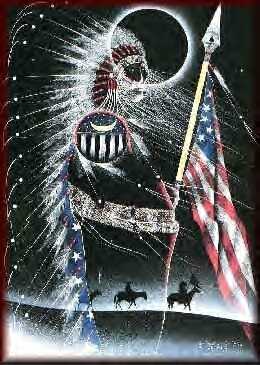Indians fought against the U.S., but they also show great loyalty to the nation.
The other insight is that genuine patriotism can still take place amid divided loyalties. Americans are capable of more nuanced thinking about what it means to be an American than we usually give ourselves credit for. Non-Indians who attend celebrations like the Little Bighorn anniversary are often surprised by the exhibitions of U.S. patriotism. But for more than a century, American Indians on the Plains have understood that their love of country can contain both their struggles to achieve tribal autonomy and their deeply felt attachments to the United States.
That is the kind of patriotism that was born at the Little Bighorn battlefield, and the kind that American Indian soldiers now take with them to Afghanistan and Iraq. It is the kind of patriotism that is too big to fit on a lapel pin.


1 comment:
Writerfella here --
The essential verities in the matter are that the land still is here and we Natives still are here. No further explication should be necessitated...
All Best
Russ Bates
'writerfella'
Post a Comment